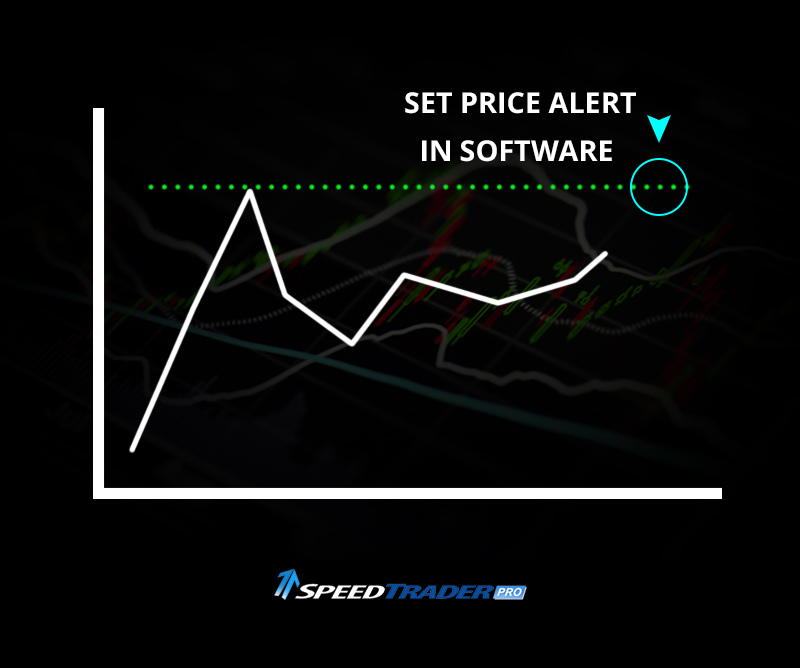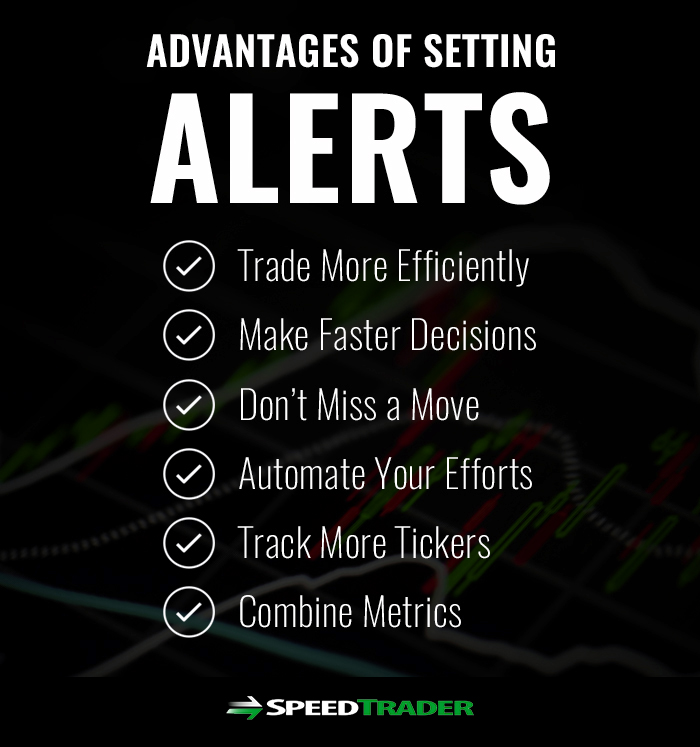If you’re anything like most day traders, you’re probably doing a thousand things at once. Watching different tickers, reading press releases, checking chat rooms, and navigating in and out of trades can be time consuming. Unfortunately, there’s no easy way to eliminate all of the work involved in being a good trader, however you can use tools to help simplify the process. One of the most helpful tools is the “Alerts” feature in your trading software.
When used properly, the alerts feature allows you to keep track of more potential opportunities without completely draining your focus. Alerts can be set so that you only focus on a stock when the time is right. Think of alerts like a timer/alarm clock. If you have to be somewhere in 3 hours, you have two options. You can keep checking the clock frantically to make sure you’re not late, or you can set a timer to let you know when you need to be ready. I think we’d all agree that the latter is way more efficient. Alerts provide the same efficiency for stock monitoring.
Alerts can be set so that you only pay attention to the stock when it’s about to make the move you’re expecting. Let’s say you’re interested in going long on stock ABC when it breaks its yearly high of $10. Sure, you could keep checking the price every single day until it hits $10, OR you can set an alert at (or just below) $10 and forget about the stock until the time is right.
You can set alerts for a variety of events, including:
– Price
– Volume
– Bid/Ask Prices & Sizes
– News
– And more!
Benefits of Trading Alerts
The main benefit of efficiency is clear, but here are a few other reasons why alerts are so beneficial:
Speed – When you set an alert, you get notified of the move you’re looking for in real-time (most software will use an alert sound). This gives you an advantage and may allow you to get into the trade before other traders.
Don’t Miss a Move – Most day traders have experienced the anguish of missing a move they’ve been waiting on for months. It’s easy to get distracted by other plays or simply forget. If you set alerts, they are saved in your trading platform and you don’t have to worry about missing a move.
Automate Your Efforts – If you use alerts frequently enough, they can become a highly efficient stock scanner. You do the research for the plays you want, set alerts, then sit back and relax. As the moves you’re looking for come into play, you get an alert and can take action accordingly.
Track More Tickers – If you’re creating a watch list, there’s only so many stocks you can include before it becomes overwhelming. Even if you were able to keep your head above water while watching all of those tickers, your efforts would be diluted, as your attention would be split across too many stocks. When you set alerts, you can keep track of more potential plays. You simply set alerts for the moves you’re looking for and move on until the alert is triggered.
Combined Metrics – Let’s say you were interested in a particular stock but wanted to wait for a day where news brought in higher than average volume. You could set an alert with multiple conditions (i.e. news & higher than average volume). Similarly, you may be waiting for a break out but you want high volume in order to avoid any false triggers. You may set your price trigger and volume trigger conditions in the same alert. This allows you to create a more refined strategy.
How to Setup Alerts
Most quality trading platforms offer the ability to set alerts. Here’s a short tutorial on how you can use alerts with our trading platform, DAS Trader. You can even set orders to trigger after alerts!
Conclusion
Traders use alerts in many different ways. They can be an incredibly helpful tool for improving the efficiency and quality of your trading. Feel free to try using some alerts and see if they help you. You can always get creative with how you setup the alerts!



